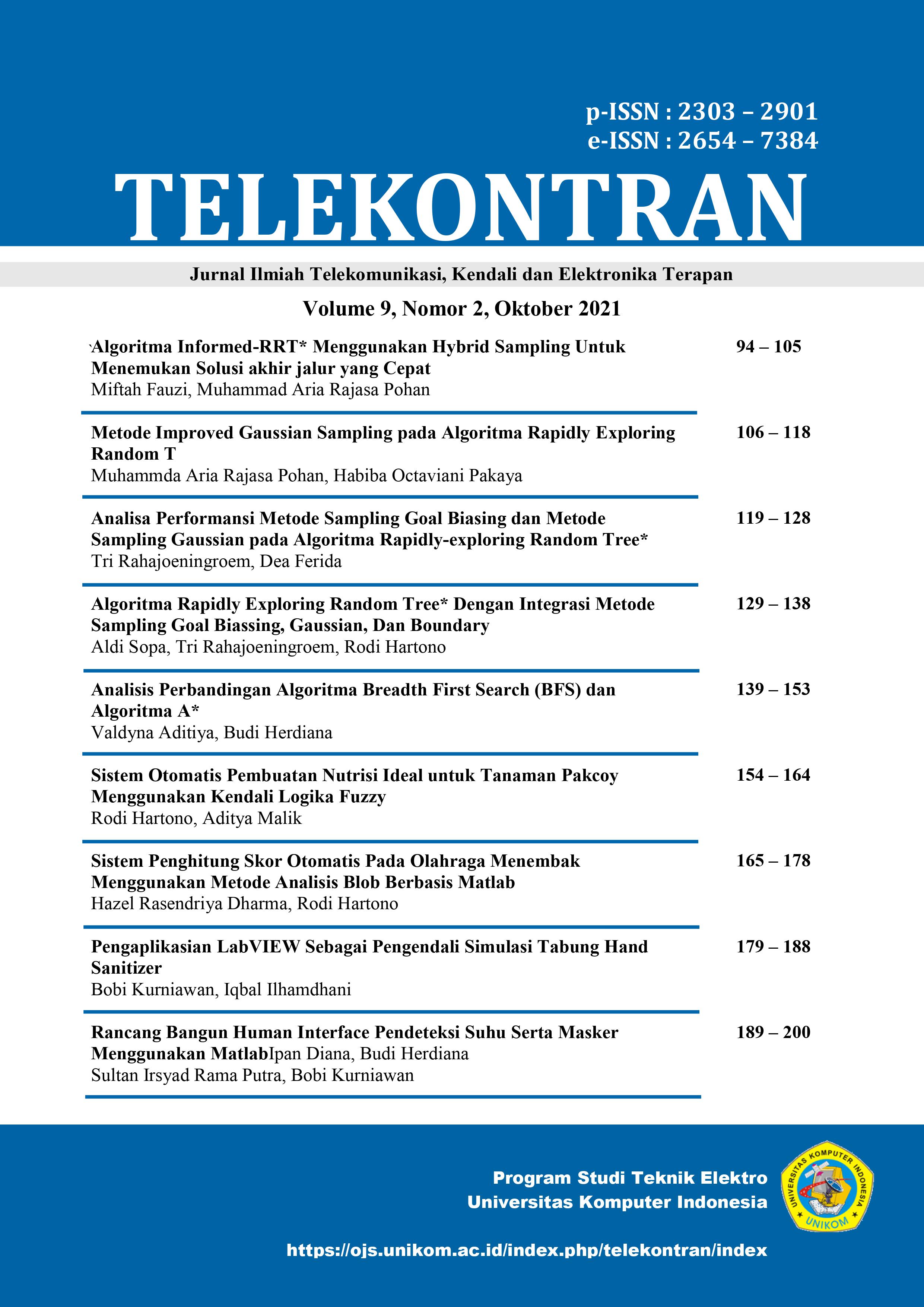Analisa Performansi Metode Sampling Goal Biasing dan Metode Sampling Gaussian pada Algoritma Rapidly-exploring Random Tree*
Main Article Content
Abstract
Motion or path planning algorithms are a fundamental research area in robotics. The algorithm rapidly-exploring random tree* (RRT*) is designed and simulated in this research. Algorithm RRT* goal biasing and algorithm RRT* gaussian sampling is the proposed algorithm. The goal of this study is to analyse the performance of the RRT* goal biasing and RRT* gaussian sampling algorithms in path planning. The test is performed using several existing benchmark cases, including narrow, trap, and clutter environments. Path costs, computation time, and the total node required in the search tree from the starting node to the destination node are the parameters compared. The RRT* goal biasing algorithm obtains the average values for the cost of distance, time, and number of nodes using the cases of narrow, clutter, and trap environmental benchmarks, namely; 8,3 (path cost in narrow), 222,1 (the number of nodes in clutter), and 30,045 second (time in trap). The average values for the cost of distance, time, and number of nodes for the case of narrow, clutter, and trap environmental benchmarks using the Gaussian RRT* algorithm are; 8,1 (path cost in narrow), 642,85 (the number of nodes in clutter), and 30,49 second (time in trap). Berdasarkan hasil pengujian, algoritma goal biasing RRT* memiliki keunggulan dalam hal waktu dan jumlah node yang dibutuhkan untuk mencapai goal point, namun biaya jarak yang dihasilkan kurang optimal.
Downloads
Article Details
Section

This work is licensed under a Creative Commons Attribution-ShareAlike 4.0 International license.

